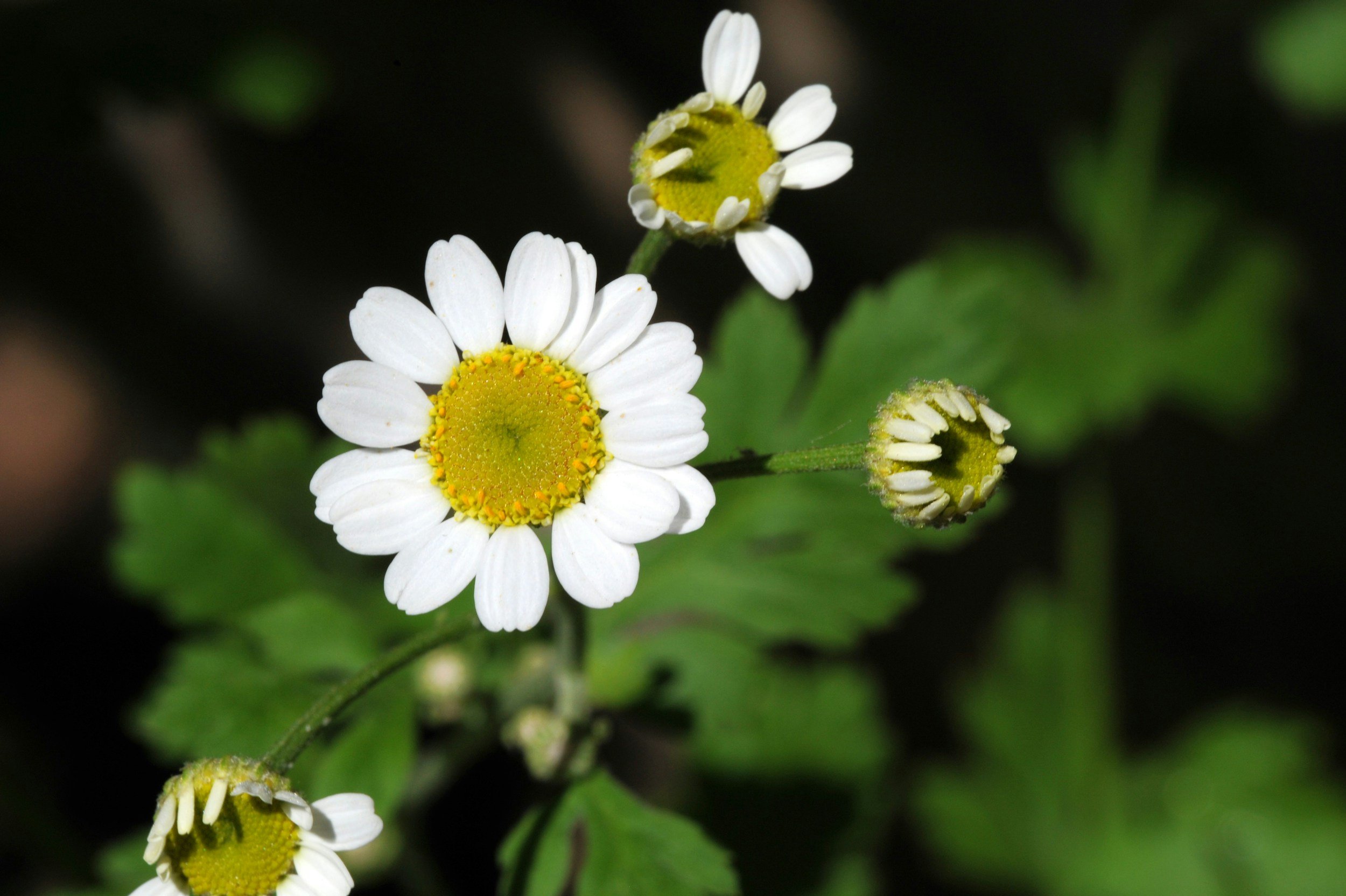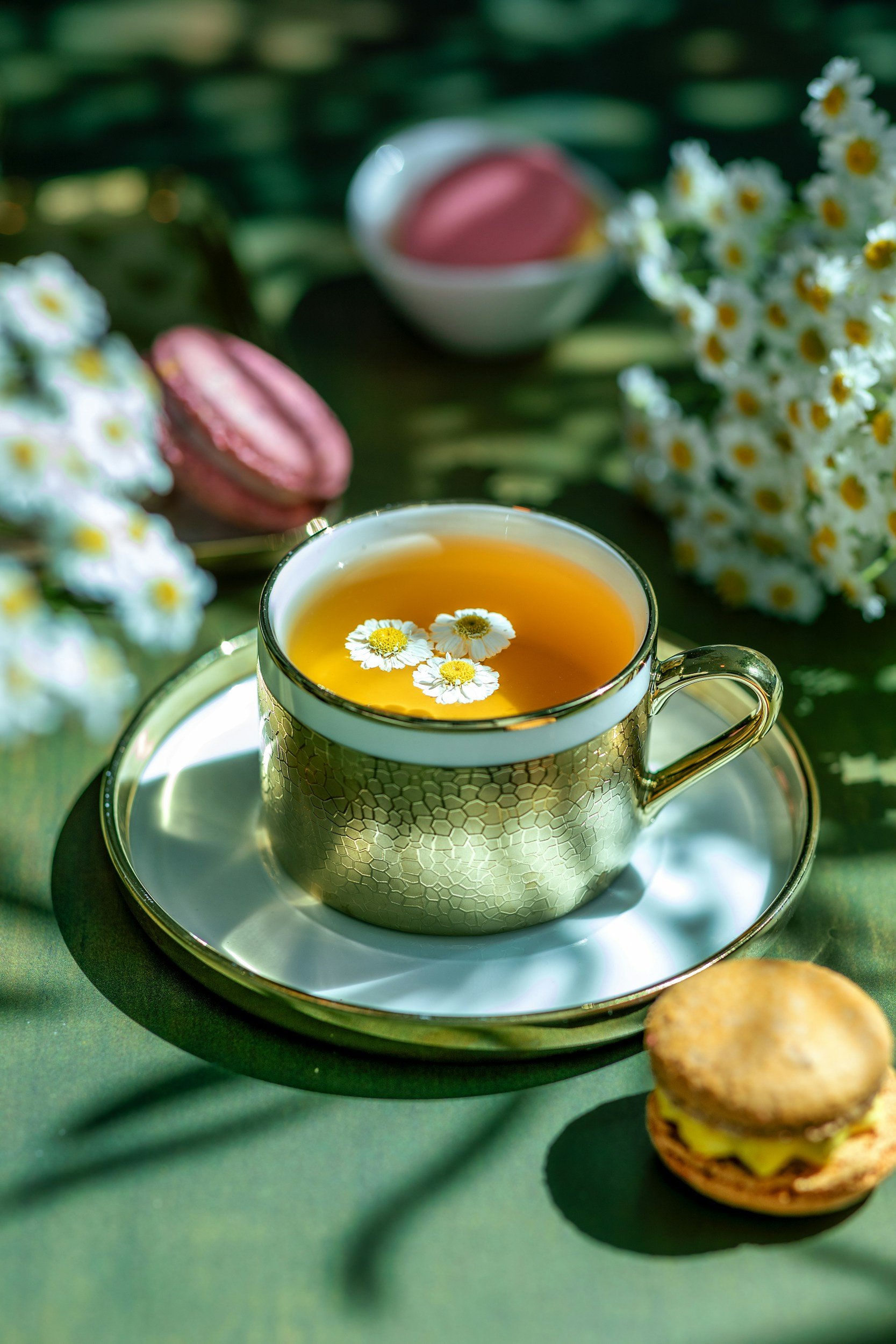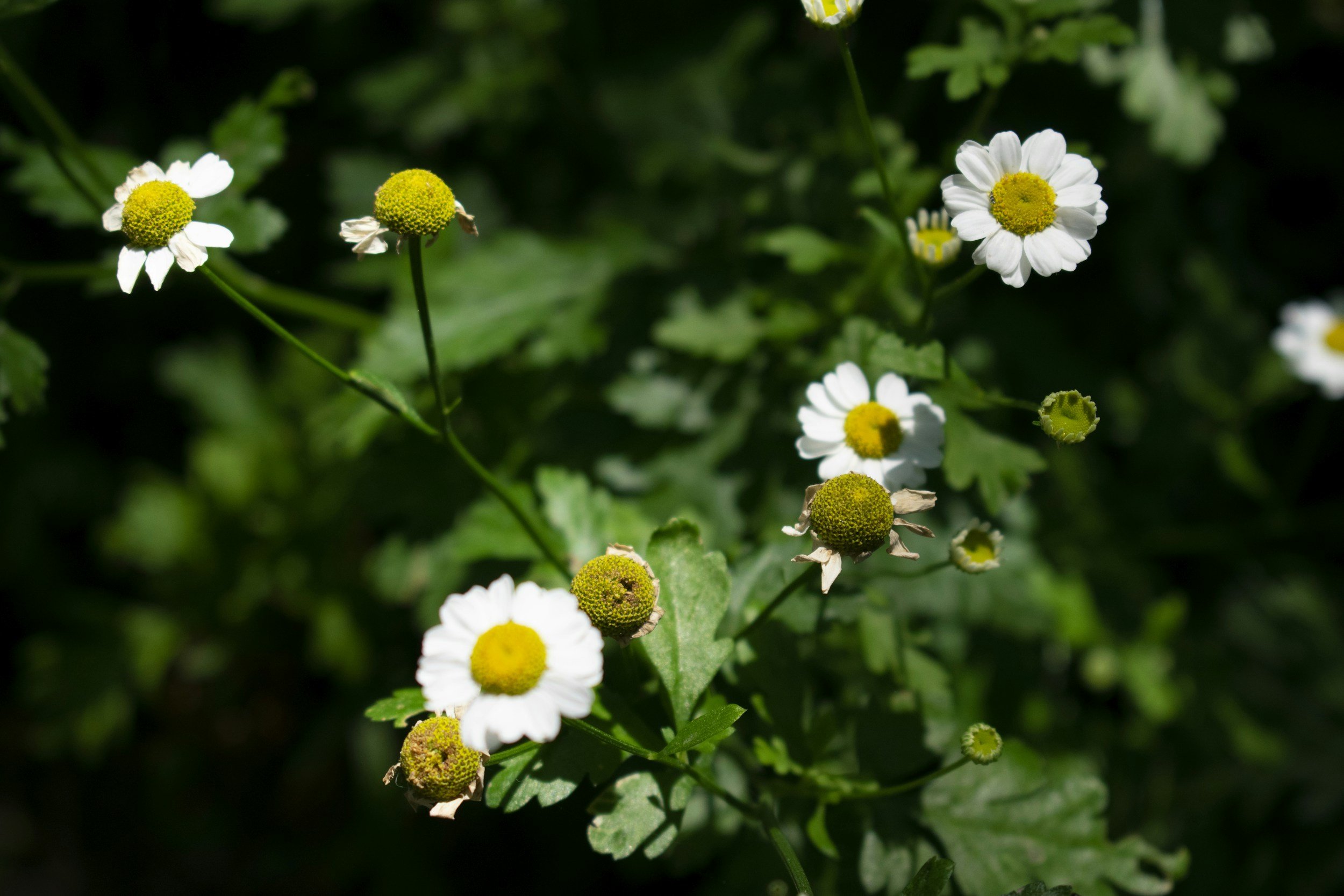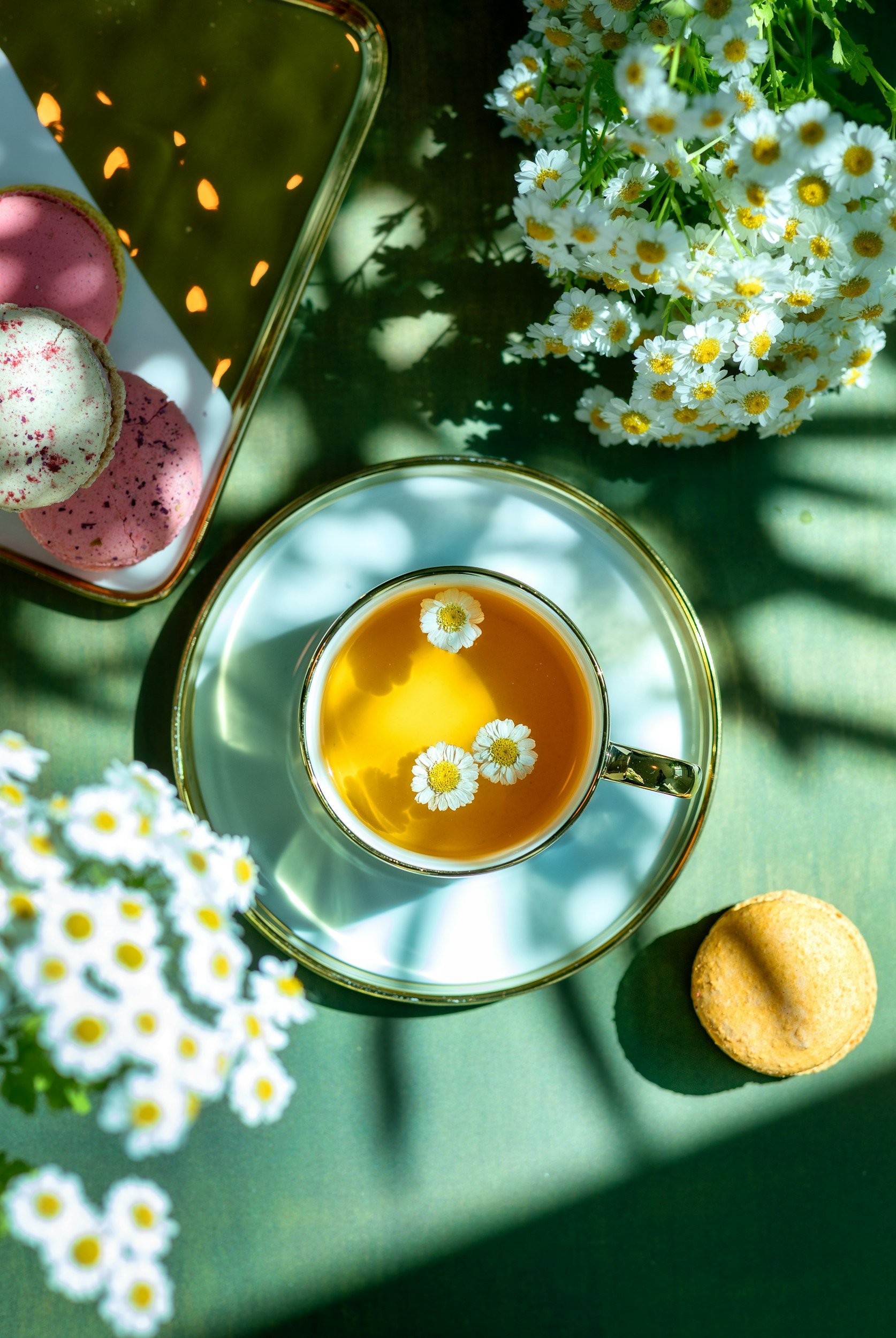
Feverfew
Feverfew (Tanacetum parthenium)
Plant family
Asteraceae
Other significant names
Featherfew
Bachelor’s Buttons
Parts used
Folia (Leaves)
(most commonly used and most potent)
Flowers (used occasionally, but less potent than leaves)
Stems (sometimes included in whole herb preparations)
Typical forms of prescription
Tincture
Fresh leaves
Feverfew (Tanacetum parthenium) - Clinical Snapshot.
Actions
Anti-inflammatory
Migraine prophylactic (helps prevent migraines)
Analgesic (pain-relieving)
Antipyretic (reduces fever)
Antirheumatic (supports joint health)
Anthelmintic (expels intestinal worms)
Emmenagogue (stimulates menstrual flow)
Diaphoretic (promotes sweating)
Uterine stimulant
Antihistamine (reduces allergic response)
Depurative (cleansing/detoxifying)
Decongestant
Cholagogue (stimulates bile flow)
Bitter (stimulates digestion)
Vasodilator (widens blood vessels)
Indications
Neurological and systemic conditions:
Migraine (prevention)
Dizziness
Tinnitus
Fever and immune-related issues:
Fever
Hay fever
Asthma
Insect bites and stings
Menstrual and reproductive health:
Dysmenorrhoea (painful periods)
Digestive and respiratory issues:
Indigestion
Coughs
⚠️Cautions / Safety⚠️
Contraindicated during pregnancy due to uterine stimulant effects
Avoid in individuals with allergies to the Asteraceae (daisy) family
Do not give to children without professional supervision
Fresh leaves may cause mouth ulcers in some individuals
Sesquiterpene Lactones
Main compound: Parthenolide
Action: Anti-inflammatory, anti-migraine, immunomodulating
Use: Parthenolide is the key active compound in feverfew and is thought to inhibit prostaglandin synthesis. This helps reduce inflammation and vascular spasm, which are central mechanisms in migraine pathophysiology. It also modulates immune responses, making feverfew useful in chronic inflammatory states. Regular use has shown more benefit in migraine prevention than acute relief.
Tanacetum parthenium
Phytochemistry and Pharmacology
Coumarins
Includes: Umbelliferone (in trace amounts)
Action: Mild anticoagulant, circulatory stimulant
Use: Although present in small amounts, coumarins help improve blood flow and may contribute to feverfew’s effect on headaches with vascular involvement.
Flavonoids
Includes: Quercetin, apigenin, luteolin
Action: Antioxidant, anti-inflammatory, vascular tonic
Use: Flavonoids help stabilise capillary permeability, reduce tissue inflammation, and support vascular health. They are useful in migraines, menstrual disorders, and skin irritation. They also support the antioxidant profile of the herb.
Volatile Oils
Includes: Camphor, borneol, alpha-pinene
Action: Carminative, antimicrobial, mildly stimulant
Use: These aromatic oils contribute to feverfew’s toning and stimulating properties, especially in the digestive tract. They provide mild antimicrobial activity and help reduce stagnation and cramping.
Traditional use
The name Feverfew reflects its historic role as a febrifuge—a plant used to reduce fevers. It was widely used in European folk medicine for this purpose, as well as to support women’s reproductive health. Traditionally taken as a uterine tonic and emmenagogue, it helped regulate menstruation, stimulate delayed menses, and support healing after childbirth.
Feverfew was also used for melancholy or low spirits, particularly when linked to menstrual imbalances or postpartum depletion. An old remedy for migraine involved chopping 2–3 fresh leaves into butter or honey, highlighting the traditional belief in its lipid-soluble constituents—a fact now supported by modern phytochemistry.
Clinical Discussion
In modern herbal medicine, Feverfew is primarily used as a preventative remedy for migraines, rather than for acute relief. Its key active constituent, parthenolide, is thought to help modulate inflammatory pathways and inhibit serotonin release from platelets, both of which are involved in migraine pathophysiology.
Feverfew may take 4–6 weeks or more of consistent use before full benefits are felt. It’s beneficial in recurring, hormonally linked, or heat-aggravated migraines that improve with rest in a cool, dark room. Herbalist David Hoffmann notes that feverfew is most effective in individuals whose migraines respond well to cooling or heat applied to the head, further affirming its role in rebalancing vascular tone.
The fresh plant tincture is sometimes applied topically to reduce the pain and itching of insect bites, though this is a secondary use.
Caution: Feverfew may cause mouth ulcers if chewed raw and is not recommended during pregnancy due to its emmenagogue action.
Cultivation/Harvesting
Feverfew (Tanacetum parthenium) is a hardy perennial often grown as a self-seeding short-lived biennial or annual. It prefers full sun, well-drained soil, and is an excellent companion plant in gardens due to its pest-repelling properties, particularly against aphids and whitefly.
Germination: Sow seeds directly in early spring or start indoors. Light is needed for germination, so press into the soil surface without covering.
Growth habit: It forms low-growing rosettes in its first year, followed by tall, daisy-like flower stalks in its second. Deadhead to encourage longer blooming and prevent excessive self-seeding.
Harvesting:
Leaves can be picked as needed throughout spring and summer—fresh leaves are often used in tinctures and remedies.
Whole aerial parts (leaves, flowers, and stems) are best harvested when the plant is in full bloom, typically in midsummer. Cut on a dry morning after dew has lifted for optimal potency.
Preservation: Dry leaves and flowers in a well-ventilated, shaded area and store in airtight jars. Parthenolide levels are thought to remain stable in properly dried material.
Key Botanical Features of Feverfew (Tanacetum parthenium)
Growth
Type: Perennial herb.
Size: Typically 30–60 cm (12–24 inches) tall, it can occasionally grow taller.
Stem: Erect and branched, with a somewhat hairy texture. The stems are often woody at the base and become more flexible higher up.
Leaves
Type: Alternate, simple.
Shape: Leaves are lanceolate (long and narrow) or ovate (oval-shaped), deeply lobed or toothed along the edges.
Size: Lower leaves can reach 10–15 cm (4–6 inches) long, with smaller upper leaves.
Texture: The leaves are rough and hairy on the underside, while the upper surface is often smooth or slightly waxy.
Colour: Dark green above and lighter green on the underside, sometimes with a silver or white appearance due to fine hairs.
Flowers
Type: Small, daisy-like composite flowers, characteristic of the Asteraceae family.
Size: Flower heads are typically 2–4 cm (0.8–1.6 inches) in diameter.
Colour: The flowers have white ray florets (petal-like structures) and a yellow central disk of small disk florets.
Flower Arrangement: The flowers grow in corymbs (flat-topped, branched clusters).
Blooming Period: Summer, typically from June to September.
Pollination: Attracts bees, butterflies, and other insect pollinators.
Fruits & Seeds
Fruit Type: Achene, typical of the Asteraceae family.
Seed Dispersal: Primarily wind-dispersed.
Size: Small, lightweight achenes are well-suited for wind dispersal.
Roots
Type: Fibrous root system with a spreading network of roots near the surface.
Function: Helps anchor the plant and absorb nutrients, particularly in disturbed or poorer soils.
Habitat & Growth Conditions
Climate: Prefers temperate climates, especially in areas with moderate rainfall.
Soil: Grows well in well-drained, sandy or loamy soils, but tolerates various soil types.
Sunlight: Prefers full sun but can tolerate some light shade.
Distribution: It is native to Southern Europe and Asia Minor but has naturalised in other parts of the world, including North America. It can often be found in meadows, roadsides, and garden settings.
Sustainability/Conservation




Sources
Bartram, T. (1998). Bartram’s Encyclopedia of Herbal Medicine. Constable.
Fisher, C. (2009). Materia Medica of Western Herbs, (2018 edition). Finchley Road, London. Aeon Books.
Hedley, C & Shaw, N. (2020). A herbal book of making and taking. Finchley Road, London. Aeon Books.
Hoffmann, D. (2003). Medical Herbalism: The Science and Practice of Herbal Medicine. Healing Arts Press.
McIntyre, A. (2019). The complete herbal tutor, revised and expanded edition. Finchley Road, London. Aeon Books.
Plants of the World Online | Kew Science. (n.d.). Plants of the World Online. https://powo.science.kew.org/
Disclaimer: This page is for educational purposes only. Consult a qualified medical herbalist before using herbs, especially during pregnancy, when trying to conceive, while breastfeeding, for medical conditions, or with children.
Read the full disclaimer → Medical Disclaimer.





